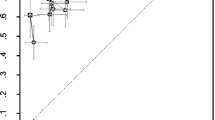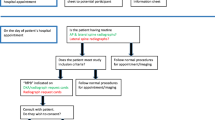Abstract
Although many vertebral fractures are clinically silent, they are associated with increased risk for subsequent osteoporotic fractures. A substantial number of these fractures are demonstrable using instant vertebral assessment with Hologic densitometers. Whether similar recognition is possible using dual-energy lateral vertebral assessment (LVA) with GE Lunar densitometers remains uncertain. Thus, we evaluated the ability of clinicians using LVA to detect prevalent vertebral fractures. Dual-energy LVA and conventional thoracic and lumbar spine radiographs were concurrently obtained in 80 postmenopausal women. Using an established visual semiquantitative system, vertebral fractures were identified individually by two non-radiologist clinicians on LVA images, and the results were compared with spinal radiograph evaluation by an expert radiologist. Using LVA, 95% of vertebral bodies from T7 through L4 were evaluable, but a majority (66%) of vertebrae from T4 to T6 were not adequately visualized. In the LVA-evaluable vertebrae, prevalent fractures were identified in 40 vertebral bodies by radiography. In this regard, the clinicians using LVA detected 17 of 18 radiographically evident vertebral fractures of grade 2 or 3, a false negative rate of 6%. They identified 50% (11/22) of grade 1 fractures. Additionally, the vast majority of evaluable non-fractured vertebrae, (764/794, 96.2%) were correctly classified as normal by LVA. Thus, clinicians utilizing LVA correctly identified the vast majority of grade 2 or 3 vertebral compression fractures and normal vertebral bodies, although detection of grade 1 fractures was less effective. In conclusion, the low-radiation, dual-energy LVA technique provides a rapid and convenient way for clinicians to identify patients with, and without, grade 2 or 3 vertebral fractures, thereby enhancing care of osteoporotic patients.



Similar content being viewed by others
References
Cooper C, Atkinson EJ, Jacobsen SL, O’Fallon WM, Melton LJ (1993) Population-based study of survival after osteoporotic fractures. Am J Epidemiol 137:1001–1005
Ensrud K, Thompson D, Cauley J et al (2000) Prevalent vertebral deformities predict mortality and hospitalization in older women with low bone mass. J Am Geriatr Soc 48:241–249
Jalava T, Sarna S, Pylkkanen L et al (2003) Association between vertebral fracture and increased mortality in osteoporotic patients. J Bone Miner Res 18:1254–1260
Gold DT (2001) The nonskeletal consequences of osteoporotic fractures. Psychologic and social outcomes. Rheum Dis Clin North Am 27:255–262
Nevitt MC, Ettinger B, Black DM et al (1998) The association of radiographically detected vertebral fractures with back pain and function: A prospective study. Ann Intern Med 128:793–800
Silverman SL, Minshall ME, Shen W, Harper KD, Xie S (2001) The relationship of health-related quality of life to prevalent and incident vertebral fractures in postmenopausal women with osteoporosis: Results from the multiple outcomes of raloxifene evaluation study. Arthritis Rheum 44:2611–2619
Melton LJ, Atkinson EJ, Cooper C, O’Fallon WM, Riggs BL (1999) Vertebral fractures predict subsequent fractures. Osteoporos Int 10:214–221
Black DM, Arden NK, Palermo L, Pearson J, Cummings SR (1999) Prevalent vertebral deformities predict hip fractures and new vertebral deformities but not wrist fractures. J Bone Miner Res 14:821–828
Cooper C, Atkinson EJ, O’Fallon M, Melton LJ 3rd (1992) Incidence of clinically diagnosed vertebral fractures: a population-based study in Rochester, Minnesota, 1985–1989. J Bone Miner Res 7:221–227
Rea JA, Chen MB, Li J et al (2001) Vertebral morphometry: A comparison of long-term precision of morphometric X-ray absorptiometry and morphometric radiography in normal and osteoporotic subjects. Osteoporos Int 12:158–166
Rea JA, Li J, Blake GM et al (2000) Visual assessment of vertebral deformity by X-ray absorptiometry: A highly predictive method to exclude vertebral deformity. Osteoporos Int 11:660–668
Greenspan SL, von Stetten E, Emond SK, Jones L, Parker RA (2001) Instant vertebral assessment. J Clin Densitom 4:373–380
Genant HK, Li J, Wu CY, Shepherd JA (2000) Vertebral fractures in osteoporosis. J Clin Densitom 3:281–290
Genant HK, Wu CY, Van Kuijk C, Nevitt MC (1993) Vertebral fracture assessment using a semiquantitative technique. J Bone Miner Res 8:1137–1148
Genant HK, Jergas M, Palmero L et al (1996) Comparison of semiquantitative visual and quantitative morphometric assessment of prevalent and incident vertebral fractures in osteoporosis: The study of osteoporotic fractures research group. J Bone Miner Res 11:984–996
Anonymous (1995) Report: Assessing vertebral fractures. National Osteoporosis Foundation working group on vertebral fractures. J Bone Miner Res 10:518–523
Genant HK, Jergas M (2003) Assessment of prevalent and incident vertebral fractures in osteoporosis research. Osteoporos Int 14:S43–S55
Ziegler R, Scheidt-Nave C, Leidig-Bruckner G (1996) What is a vertebral fracture? Bone 18:169S–177S
Osman AAH, Bassiouni H, Koutri R et al (1994) Aging of the thoracic spine: Distinction between wedging in osteoarthritis and fracture in osteoporosis—A cross-section and longitudinal study. Bone 15:437–442
Kleerekoper M, Nelson DA (1990) Vertebral fracture or vertebral deformity? Calcif Tissue Int 50:5–6
Harrison JE, Patt N, Muller C et al (1990) Bone mineral mass associated with postmenopausal vertebral deformities. Bone Miner 10:243–251
Szulc P, Munoz F, Marchand F, Delmas PD (2001) Semiquantitative evaluation of prevalent vertebral deformities in men and their relationship with osteoporosis: The MINOS study. Osteoporos Int 12:302–310
Genant HK, Mitlak BH, Myers S, Wang O (2000) Radiographic fracture grade is related to clinical disease severity. Results from the rhPTH (1–34) fracture prevention study. Arthritis Rheum 43:S383
Delmas PD, Genant HK, Crans GG et al (2003) Severity of prevalent vertebral fractures and the risk of subsequent vertebral and nonvertebral fractures: results from the MORE trial. Bone 33:522–532
Delmas PD, Watts N, Eastell R et al (2001) Underdiagnosis of vertebral fractures is a worldwide problem: The IMPACT study. J Bone Miner Res 16 [Suppl 1]:S139
Gehlback SH, Bigelow C, Heimisdottir M et al (2000) Recognition of vertebral fracture in a clinical setting. Osteoporos Int 11:577–582
Sauer P, Leidig G, Minne HW et al (1991) Spine deformity index versus other objective procedures of vertebral fracture identification in patients with osteoporosis: A comparative study. J Bone Miner Res 6:227–238
Ross PD, Davis JW, Epstein RS, Wasnich RD (1992) Ability of vertebral dimensions from a single radiograph to identify fractures. Calcif Tissue Int 51:95–99
Smith-Bindman R, Cummings SR, Steiger P, Genant HK (1991) A comparison of morphometric definitions of vertebral fractures. J Bone Miner Res 6:25–34
Adami S, Gatti D, Rossini M et al (1992) The radiological assessment of vertebral osteoporosis. Bone 13:S33–S66
Hansen MA, Overgaard K, Nielsen VA et al (1992) No secular increase in the prevalence of vertebral fractures due to postmenopausal osteoporosis. Osteoporos Int 2:241–246
Melton LJ, Kan SH, Frye MA et al (1989) Epidemiology of vertebral fractures in women. Am J Epidemiol 129:1000–1011
Clark KC (1986) Positioning in radiography. Butterworth-Heinemanns, Oxford, UK
Acknowledgement
The authors acknowledge the scientific and technical support of Ken Faulkner, Ph.D., from GE Medical Systems Lunar. This work was supported in part by a grant from GE Medical Systems Lunar
Author information
Authors and Affiliations
Corresponding author
Additional information
Presented in abstract form at the ASBMR 2002 annual meeting
Rights and permissions
About this article
Cite this article
Binkley, N., Krueger, D., Gangnon, R. et al. Lateral vertebral assessment: a valuable technique to detect clinically significant vertebral fractures. Osteoporos Int 16, 1513–1518 (2005). https://doi.org/10.1007/s00198-005-1891-7
Received:
Accepted:
Published:
Issue Date:
DOI: https://doi.org/10.1007/s00198-005-1891-7




